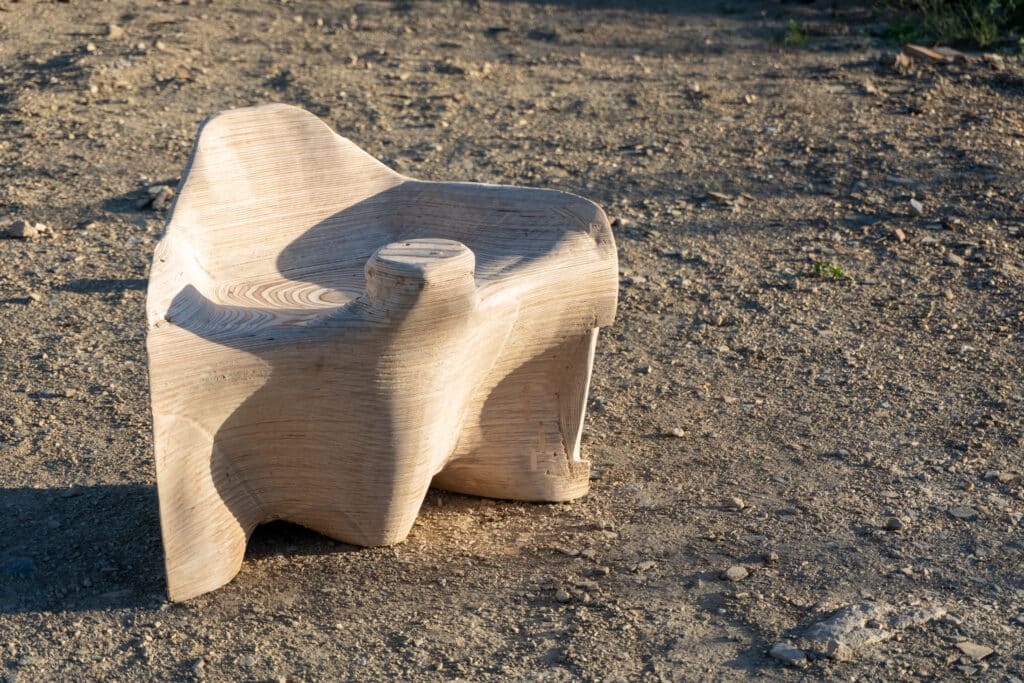
Abstract:
The Elephant Chair project was developed during the workshop “Robotic Milling and Design for Subtractive Manufacturing Workflows.”
This workshop explored hybrid fabrication methods combining 3-axis CNC milling and 6-axis robotic milling to translate digital geometries into precise wooden prototypes. Our team designed and fabricated a furniture piece inspired by organic anatomy, robust yet flexible, mirroring the mechanical elegance of the machines used to produce it.
Design Concept:
The design began with the metaphor of a creature assembled from distinct parts, referencing the myth of Invunche a being twisted into itself. Through multiple iterations, we refined a sculptural bench with a thickened backrest and adjusted proportions to balance stability and comfort.
Each iteration evolved through a combination of digital draft-angle analysis, simulation in Grasshopper/KUKAprc, and physical prototyping.
Fabrication Workflow:

1-CNC Milling (3-axis):
- 24 plywood layers sliced, nested, and cut into 43 pieces.
- Approximate cutting time: 6.5 hours.
- Layers assembled through glueing and clamping to form the rough geometry.
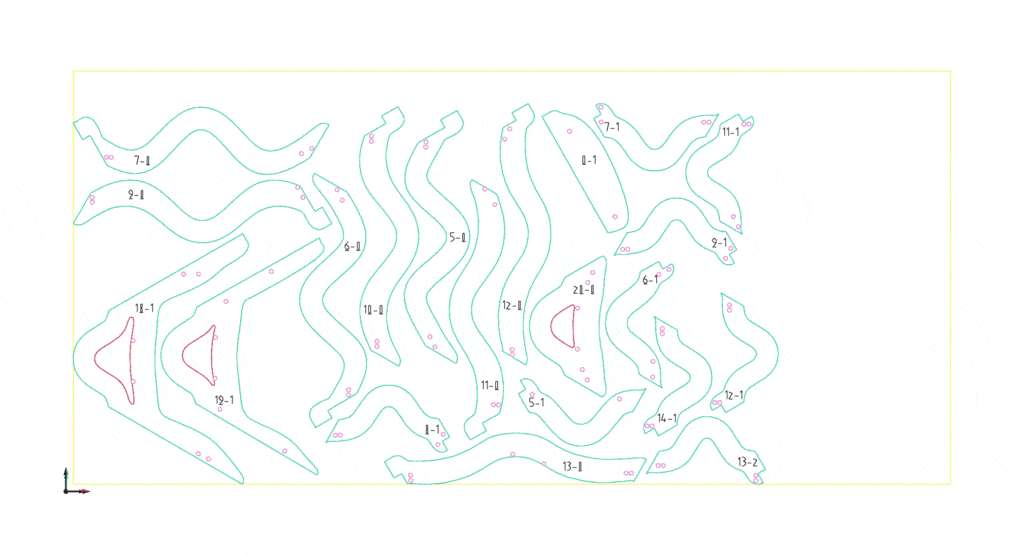
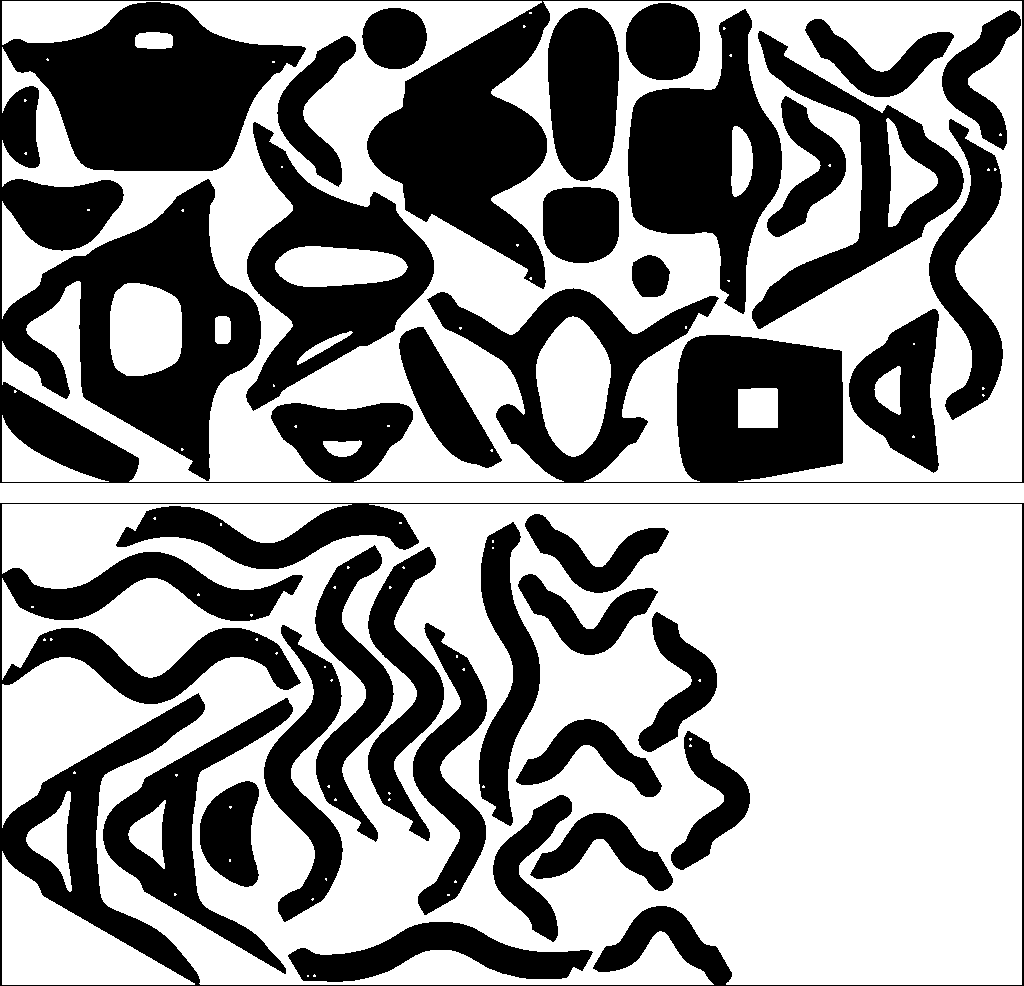
2-Lamination assembly
The assembly process consisted of stacking the previously cut and marked layers of plywood with dowels and glue. For this step it was very important to ensure that the pieces were properly labelled before taking the plywood out of the CNC machine so the numbers of each slice could be matched with the model so that while stacking they would be in the right order and there where no loose pieces at the assembly time. After taking them out of the machine the next step was to order them based on the different levels so that we made sure there were no loose pieces. Finally after stacking and gluing them the whole structure was clamped and left drying for the whole night.
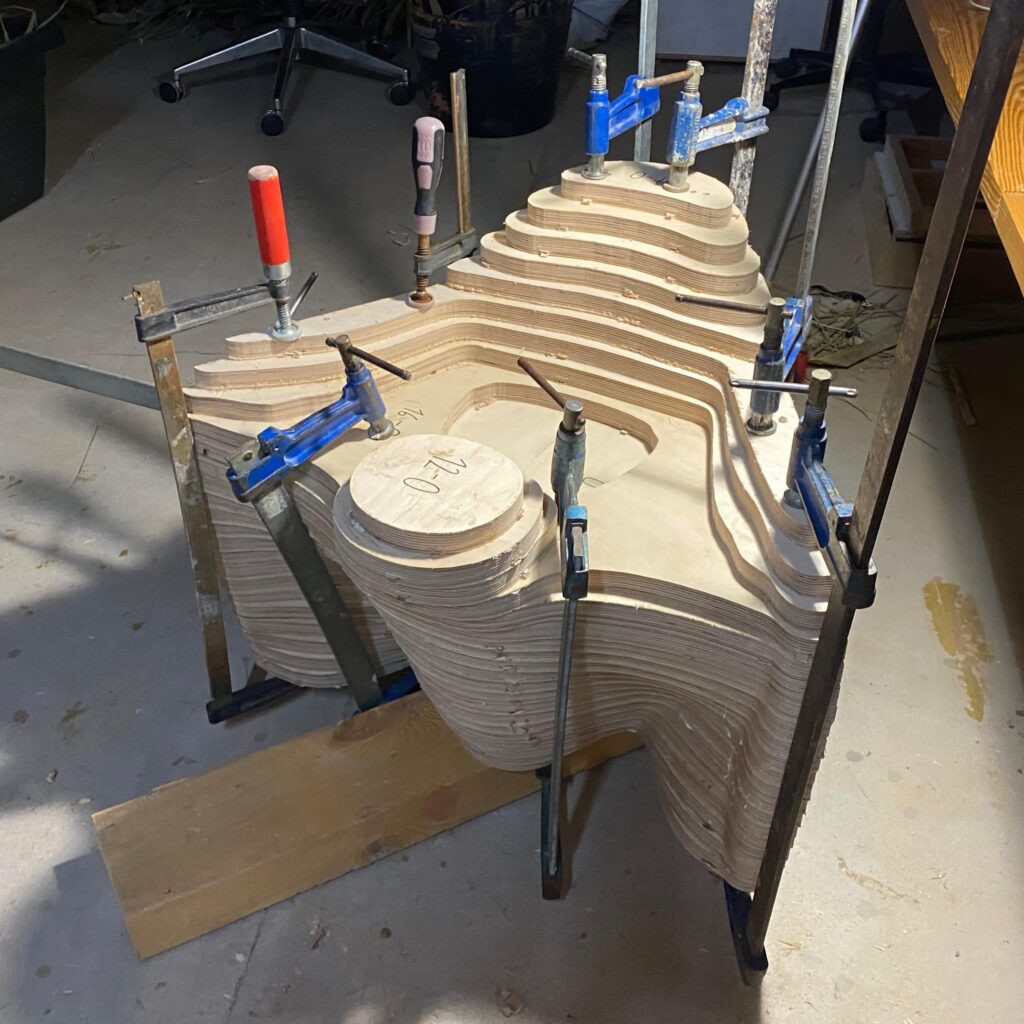
The object was mounted on a fixed base positioned at its left side, secured with tension straps to ensure stability during multi-angle milling. The sequencing was defined by surface orientation and accessibility, progressing in a specific order to minimize repositioning and avoid collisions between the robot arm and fixing elements. Starting from the bottom region allowed longer and more continuous toolpaths on broader surfaces, stabilizing the cutting behaviour before approaching smaller, more complex areas.
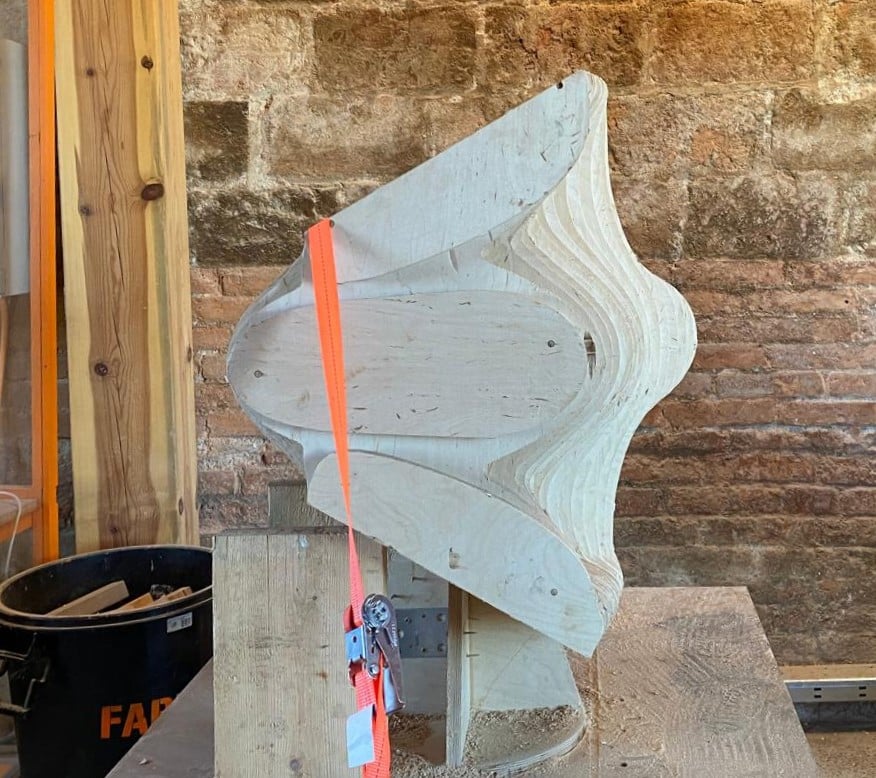
3-Robotic Milling (6-axis):
- Finishing process performed using ABB robot equipped with a spindle.
- Total milling time: ~7 hours.
- Speed calibration: 30% for verification, up to 100% at stable ranges.
- Toolpaths planned to avoid collisions and ensure smooth curvature transitions.
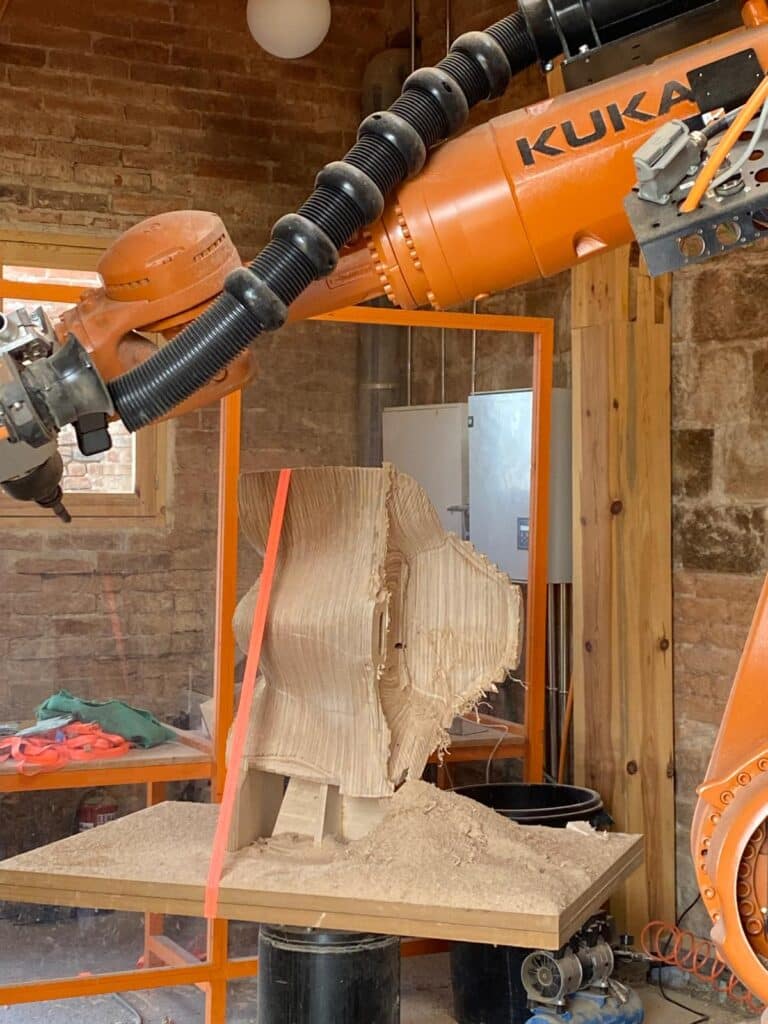
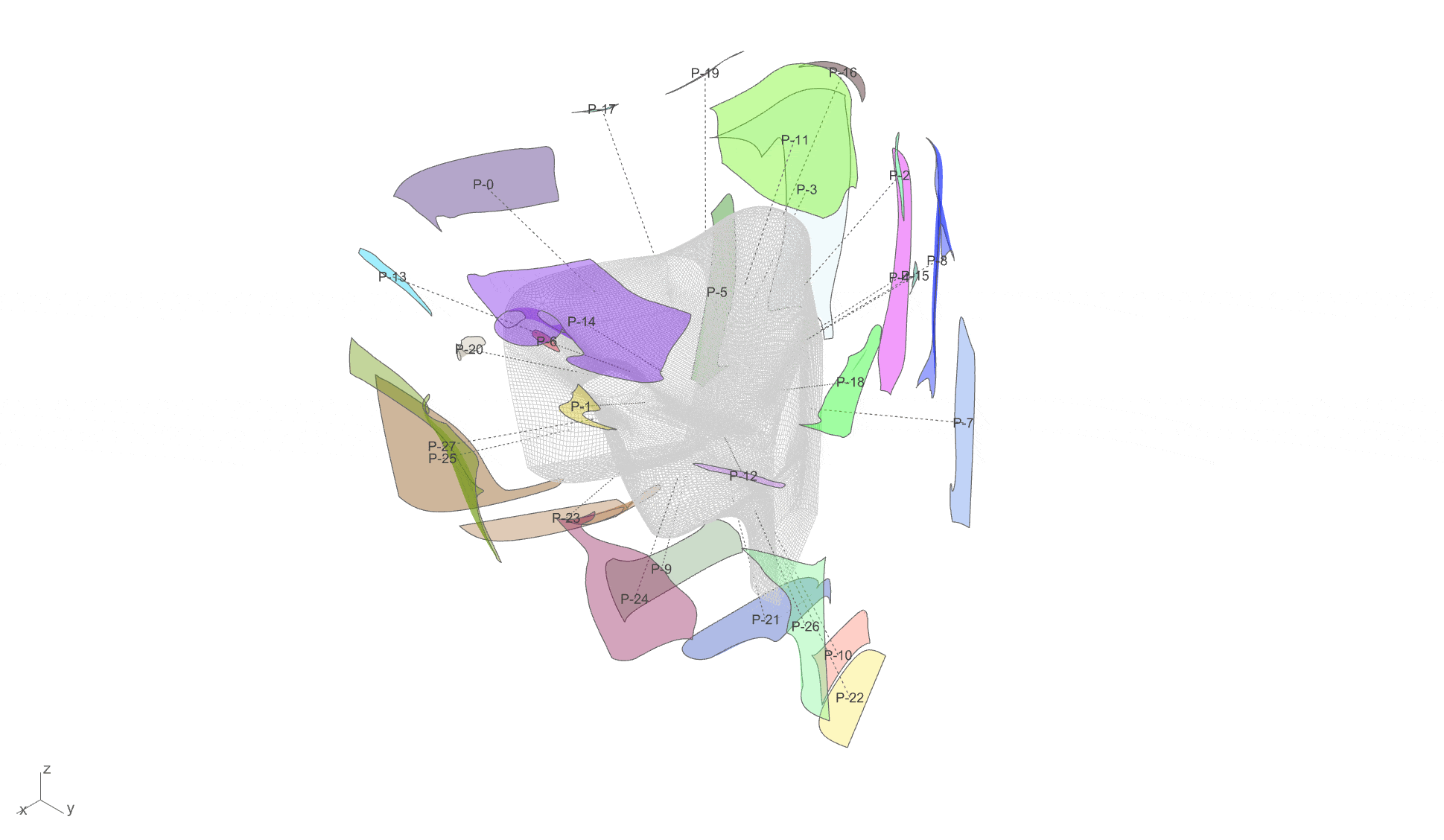
4-Finishing:
- Manual sanding and surface refinement completed the process, representing human-robot collaboration.
- Minor errors (patch 18 and 26) were corrected manually after milling.
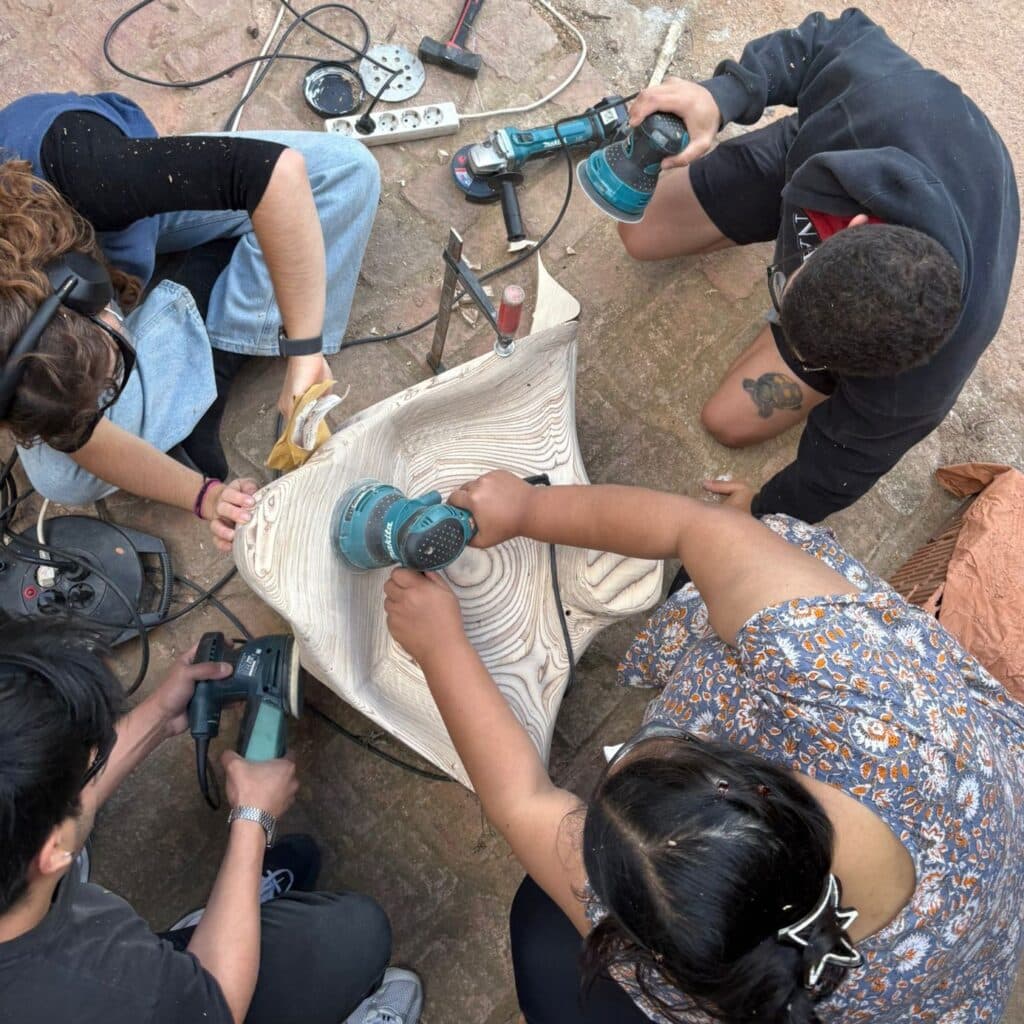
Technical Highlights:
Material: Plywood
Processes: Stack lamination, 3-axis CNC cutting, 6-axis robotic milling
Software: Rhino 8, Grasshopper, RhinoCAM, KUKA|prc
Key Parameters: 28 patches; multi-angle milling; draft-angle control; collision zone analysis
Reflection:
This workshop demonstrated the power of hybrid subtractive workflows, where CNC and robotic milling complement each other in efficiency and precision. Beyond technical skills, the project emphasized the dialogue between machine intelligence and human craft, revealing how iterative fabrication fosters both accuracy and expression.
Elephant Chair is a project of IAAC, Institute for Advanced Architecture of Catalonia developed at Masters of Advanced Ecological Buildings and Biocities and Master in Robotics and Advanced Construction by students Carlos Eduardo Mejía Valle, Tiphaine Pottier, Maya Tastet, Amaro Nahuel Donoso Bravo, Subha Tahsin Saba & Onur Berk Dogrultucu and faculty Pit Siebenaler and Nacho Monereo.

